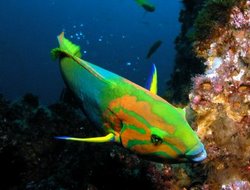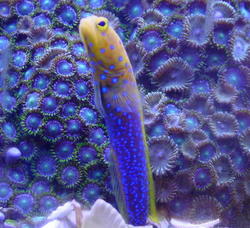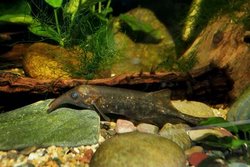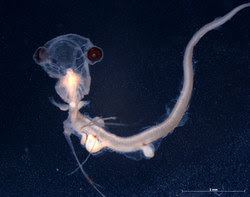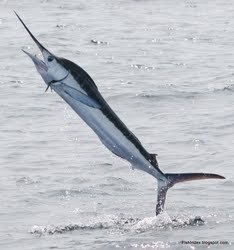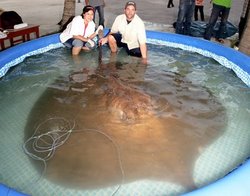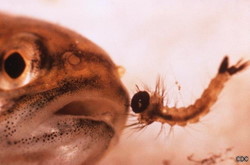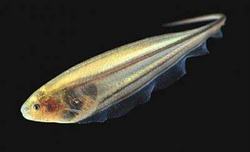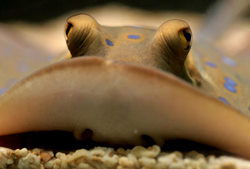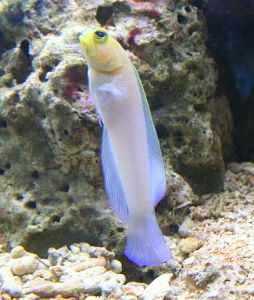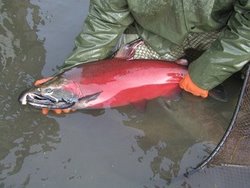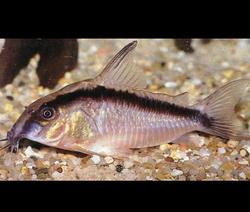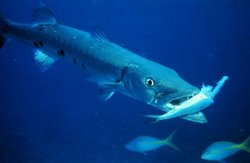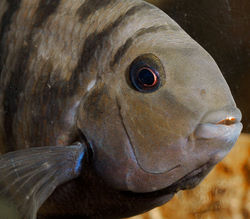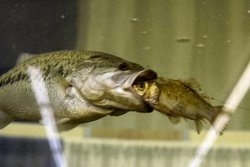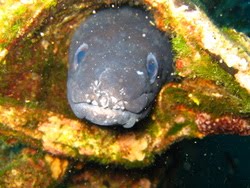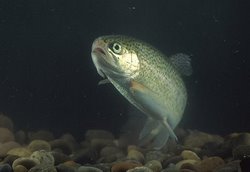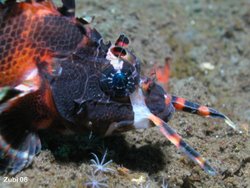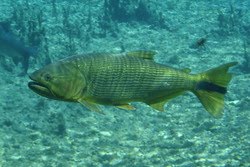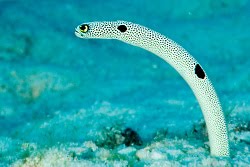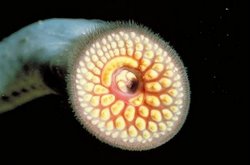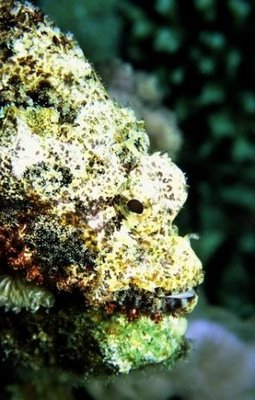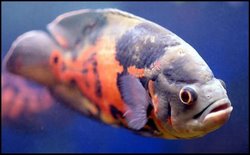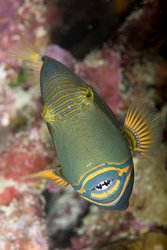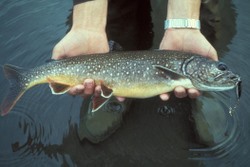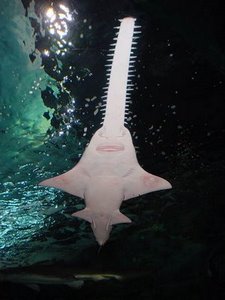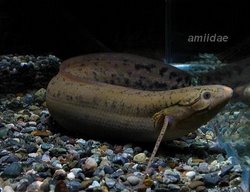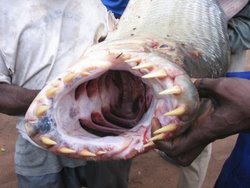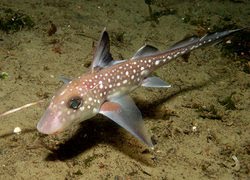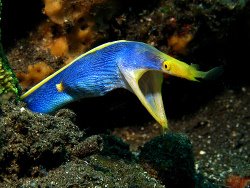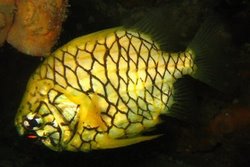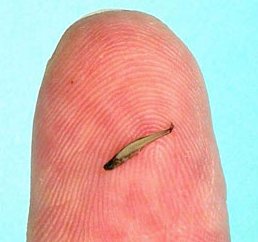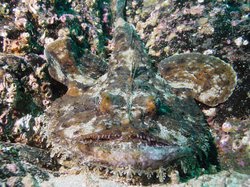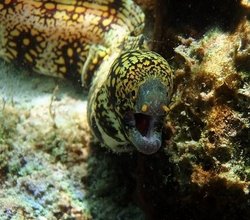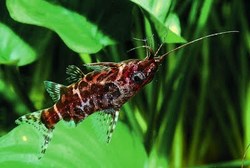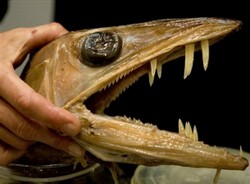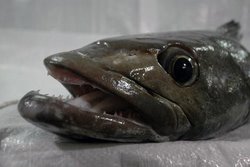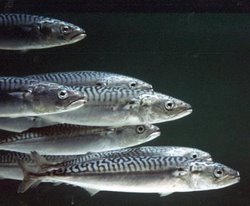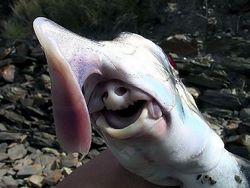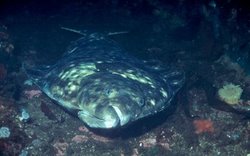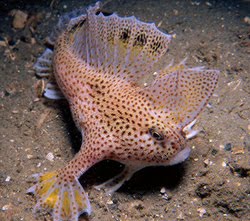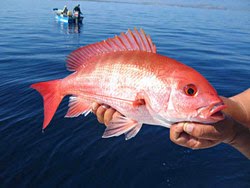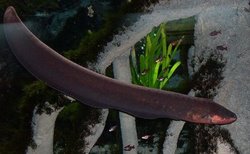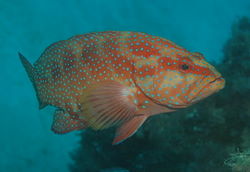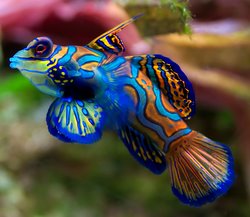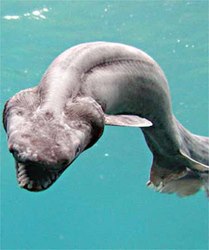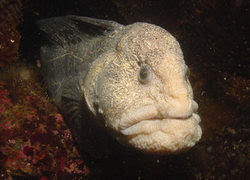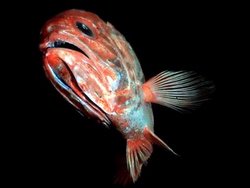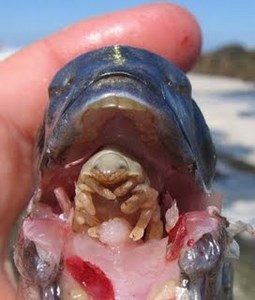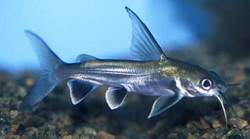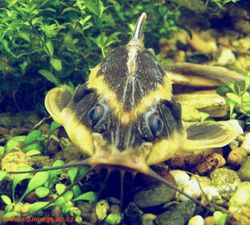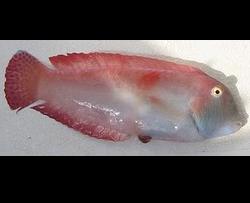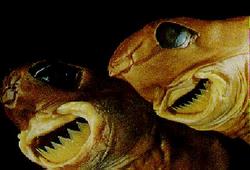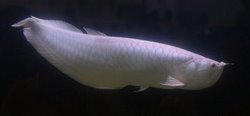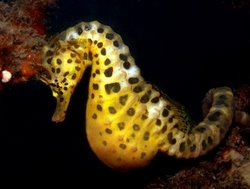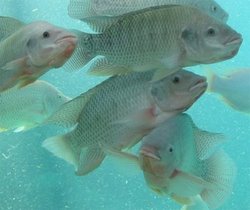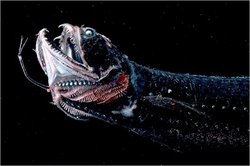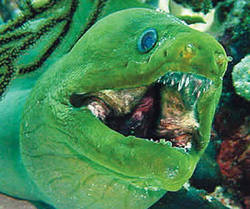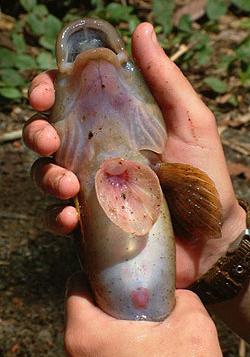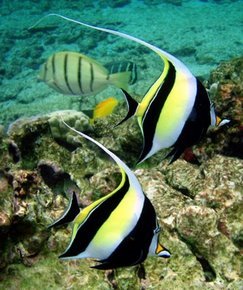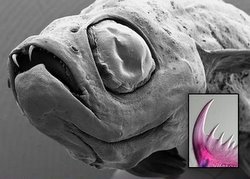 The Spiny Dogfish or Squalus acanthias is actually a shark, in fact its one of the most common sharks in the world. This fish has many different names including the Spurdog, Piked Dogfish, Skittledog, Spotted Dogfish, White-Spotted Dogfish, Codshark, and Thorndog.
The Spiny Dogfish or Squalus acanthias is actually a shark, in fact its one of the most common sharks in the world. This fish has many different names including the Spurdog, Piked Dogfish, Skittledog, Spotted Dogfish, White-Spotted Dogfish, Codshark, and Thorndog.The Spiny Dogfish has spines on its body that is uses for defense. Be careful if you are near one of this sharks as these spines are poisonous. They will curl up their backs to strike the would be predators. These sharks have flat grinding teeth in the front along with sharper teeth towards the back of their mouths.
 Spiny Dogfish are often found in schools, that sometimes can even number in the thousands! They are normally only about 3' long and weigh around 10lbs. The Spiny Dogfish can live to about 30 years in age maximum.
Spiny Dogfish are often found in schools, that sometimes can even number in the thousands! They are normally only about 3' long and weigh around 10lbs. The Spiny Dogfish can live to about 30 years in age maximum.They look very similar to other Dogfish, but you can tell them apart by the row of white dots that run along its sides. They also have the sharp spine that we talked about early. These spines are found in the front of its dorsal fins. When they are first born the Spiny Dogfish has a sack that is attached to its body. Over time this will simply fall off. To check out a baby Spiny Dogfish in action watch the video below...
Spiny Dogfish are often used for food in several different places around the world. If you have any recipes, tips, or other facts about the Spiny Dogfish that you would like to share please leave them below in the comments.







